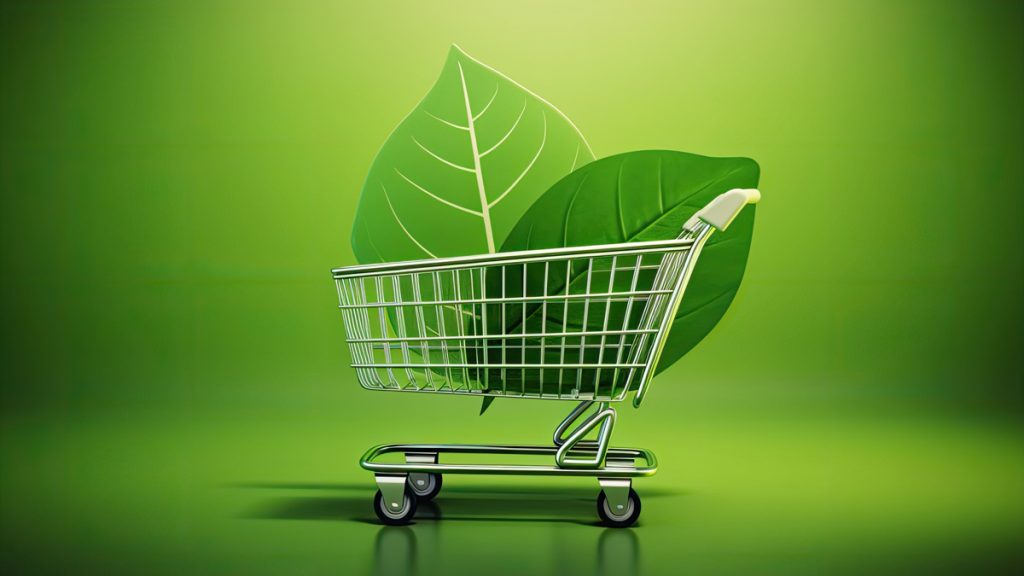How To Be More Eco-Friendly: Tips & Everyday Products You Need

Our planet is facing unprecedented environmental challenges. That means now, more than ever, is the optimal time to embrace eco-friendly practices and become a mindful consumer. Whether you’re just dipping your toes in the eco-friendly movement, or you’re a seasoned pro at sustainability – looking for new ways to reduce, reuse, and respect our planet is paramount. Luckily, we’ve got some helpful eco tips that will get you on the right side of planetary preservation. We’ll explore simple yet effective tips, everyday products, and conscious practices that will show you how to be more eco-friendly and help you positively impact our beautiful planet.

Table of Contents
- What Does It Mean To Be Eco-Friendly?
- How To Be A Mindful Consumer
- How To Participate in Waste Reduction and Recycling?
- How To Shop With Quality Over Quantity In Mind
- Ways To Support Local and Sustainable Agriculture
- How Important Is Continuous Learning and Adaptation in Adopting An Eco-friendly Lifestyle?
- Which Current And Environmentally Conscious Practice Would Most Help The Environment?
- Must-Have Eco-Friendly Products
- Conclusion
What Does It Mean To Be Eco-Friendly?
Being eco-friendly means living in a way that minimizes environmental harm and promotes sustainability. It involves conscious choices about consuming resources, reducing waste, and protecting natural ecosystems.
As the term eco-friendly implies, learning how to be more green is all about being a good steward of the environment and honoring the delicate balance of our planet. Instead of mindlessly purchasing or acting in ways without any consideration of consequences to our ecosystem – being eco-friendly takes the opposite approach. It’s all about nurturing and ensuring renewability for our planet – this is a giving mindset rather than taking.
How To Be A Mindful Consumer
Being a mindful consumer is about making deliberate choices that align with your conservational values, prioritizing sustainability, and having a mindset of helping the planet rather than depleting it. It means being aware of our purchases and their influence on the environment while also being proactive about minimizing harmful actions that are diminishing the vibrancy of our planet.
As a mindful consumer, you take extra care in selecting what you buy. This might look like only purchasing products that are biodegradable and sustainably grown. It could also mean only purchasing from companies with a 100% green policy – so in every stage of producing a product – ask if that company contributes to conservation and preserving our planet’s precious resources.
How To Participate in Waste Reduction and Recycling?
Participating in waste reduction and recycling is crucial to being more eco-friendly. For example, always aim to reduce your overall waste production. This means opting for reusable products instead of single-use items whenever possible.
For instance, invest in a quality reusable water bottle, bring your own grocery bags, and say “no” to plastic one-use items that contribute to the landfill crisis at large today. Start replacing household items like switching your old sponge for a sustainable konjac sponge. Small changes like these can make a big difference in the long run.
Also, you should make sure you are recycling correctly. Familiarize yourself with local recycling guidelines and properly separate recyclables from regular trash. Educate yourself on what materials your local recycling facility accepts and avoid contamination by rinsing out containers before tossing them into the bin.
Additionally, consider composting as a way to divert organic waste from landfills. Food scraps and yard trimmings (known as “green waste”) can be composted at home or through community programs. Composting reduces methane emissions and produces nutrient-rich soil that can be used for gardening.
Furthermore, donate or repurpose items instead of throwing them away. Many things we consider as trash might be a treasure to others. So, explore donation centers or online platforms where you can give these items a second life instead of adding to the growing waste problem in our world.

How To Shop With Quality Over Quantity In Mind
It’s easy to get caught up in the allure of quantity when we shop. We’re constantly bombarded with advertisements encouraging us to buy more and accumulate more stuff. But if we truly want to learn how to be eco-friendly, it’s time to shift our mindset from quantity to quality.
You can do this by investing in durable and long-lasting products. Instead of buying cheaply made items that will break or wear out quickly, opt for higher quality goods that are built to last. This reduces waste and saves you money in the long run.
Also, contemplate the environmental impact of the products you purchase. Look for brands that prioritize sustainability and use ethically sourced and produced materials.
Additionally, think closely about whether you need a certain item before making a purchase. Take some time to consider if it aligns with your values and lifestyle. Avoid impulse buys or purchasing things simply because they’re on sale.
You can also explore secondhand options when shopping for clothing or furniture. Thrift stores, consignment shops, and online “upcycling” platforms can offer a wide range of high-quality items at affordable prices while reducing waste.
Ways To Support Local and Sustainable Agriculture
We can show our support and help the planet by purchasing food from local farmers. This helps diminish the carbon footprint associated with long-distance transportation and supports your community’s economy to boot!
You can start by regularly visiting your local farmers market to buy fresh fruits, veggies, and other items that are grown or made directly by the growers. This helps them thrive and reduces the need for packaging and transportation.
When shopping for groceries, look for products that are certified organic. Organic farming practices prioritize soil health and biodiversity while avoiding harmful pesticides and synthetic fertilizers. Also, consider purchasing meat, eggs, and dairy products from farms that practice sustainable livestock farming methods like rotational grazing or free-range systems.
How Important Is Continuous Learning and Adaptation in Adopting An Eco-friendly Lifestyle?
Learning how to be more eco-friendly is all about staying hyper-aware of the health status of our planet, and being proactive in protecting it. As we strive to be more environmentally conscious, staying informed about the latest sustainable practices and technologies is essential. In fact, staying abreast of conservation strategies and continuously adopting eco-friendly actions empowers us to reduce our carbon footprint and find alternative solutions that are kinder to the planet.
Adaptation is equally important because the world is constantly changing, as is our understanding and awareness of environmental challenges. We can adjust our habits and behaviors by staying flexible and open-minded. It’s not enough to stick with old routines; we must be willing to embrace new ideas, techniques, and products that align with a greener lifestyle.
Which Current And Environmentally Conscious Practice Would Most Help The Environment?
“Reuse and reduce” should be your mantra when you consider which current and environmentally conscious practice would most help the environment. Why? Because the actions of reusing and reducing are easy to make, and they can significantly impact our environment for the better.
Think about this: The average American produces about 4.5 pounds of trash every single day. That’s 250+ million pounds of waste per day in America only. 140 million pounds of that trash goes directly to landfills.
In light of those staggering statistics, can you imagine the positive results we could manifest if all of us purposed in our hearts to reuse and reduce in our everyday lives? From reducing waste pile-up to lessening greenhouse gas emissions, which have reached record levels, if all of us pitch in, we can change the trend of climate change and environmental degradation.
So, please – Reuse whenever you can and reduce waste at every level, wherever possible.
Must-Have Eco-Friendly Products
- Eco-Friendly Laundry Detergents like sheets or tablets
- Bamboo Toothbrushes
- Natural Sponges like Konjac or Coconut Fiber
- Reusable Food Storage Containers
- Eco-Friendly Clothing
- Bamboo Toilet Paper
- Reusable Water Bottles
- Toothtabs over toothpaste tubes
- Biodegradable Cleaning Products
- Shampoo and conditioner bars over shampoo bottles
- Eco-Friendly Skincare Products

Conclusion
Whether purchasing shoes or shampoo – adopting an eco-friendly lifestyle is not only beneficial for the environment but also for our own well-being. We all benefit from living in a healthy, happy environment and making small changes in our daily habits and choices, we can contribute to a greener and more sustainable future.
Ultimately, learning how to be more eco-friendly is all about reusing, reducing waste, and being mindful consumers. Being conscious of the products we purchase and their impact on the environment, opting for reusable items, reducing waste, and supporting companies with eco-friendly practices are all steps towards a more sustainable way of living.






